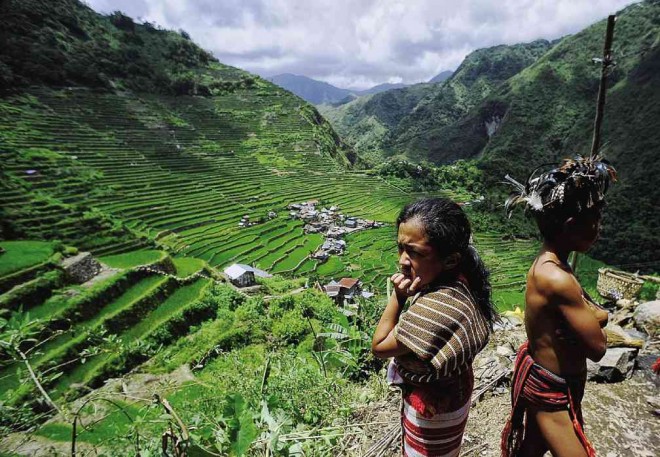
GOVERNMENT census helps reveal the true face of the indigenous Filipino, now that new policies require local statisticians to record births, deaths, weddings and even divorces involving indigenous peoples. EV ESPIRITU
Elsie Mokudef, a Teduray elder from Looy, South Upi town in Maguindanao province, appreciates the government initiative to put a face to poverty when it embarked on a national household survey aimed at profiling the poorest people who qualify for its poverty alleviation projects.
That is until she realized that the “face” bears little resemblance to her and her clan.
“Many of my fellow Teduray have no birth certificates, which make it difficult for us to access the 4Ps (the government’s conditional cash transfer project called Pantawid Pamilyang Pilipino Program) and other social services,” Mokudef said at a recent national forum in Quezon City that commemorated the International Day for Indigenous Peoples.
The indigenous Filipino population has been an elusive sector, and is often profiled as a mere estimate by government agencies today, said Brigida Zenaida Hamada-Pawid, former chair of the National Commission on Indigenous Peoples (NCIP), when she addressed this year’s founding anniversary of the Cordillera Administrative Region.
Pawid, who was reappointed NCIP commissioner for the Cordillera, said: “Ninety-two percent of them (indigenous Filipinos) do not appear in the planning statistics of the government. We are among the generally inaccessible for development.”
“We have fallen through the [cracks of the] floors. Why? When we deliver our children we do not register them, so we do not get born. When we get married, we don’t go to the priest nor to the mayor, so we are not [officially] married,” she said.
The government has made some progress in profiling the indigenous Filipinos and its efforts have drawn out facts about IPs that have not been evident before, according to a University of the Philippines Baguio study commissioned by NCIP.
For example, many indigenous communities still practice customary marriages, although few are registered.
NCIP is authorized by the Indigenous Peoples Rights Act of 1997 (Ipra or Republic Act No. 8371) to issue Certificates of Tribal Marriage (CTMs), which are lawful under civil laws.
Not registered
The agency issued 317 CTMs, from 2004 to 2012, to Ibaloi, Kankanaey, Tuwali, Ayangan, Kalinga and Applai couples, but most of these ritual weddings were never recorded by their respective civil registrars, the UP team said.
Part of the problem is the bureaucracy’s need for a solemnizing official, which in some IP cases involves a group or the community, the study said.
A Kalinga town also practices divorce. The UP team discovered that the local registrar recorded 96 dissolved marriages in Tinglayan town from 2004 to 2012, the highest (18) taking place in 2011.
Led by Professor Lorelei Mendoza, UP Baguio undertook its civil registration project, principally to investigate how local governments have fulfilled the census requirements of Ipra. It was submitted to the NCIP Cordillera office in February.
The Department of Social Welfare and Development has also determined through the National Household Targeting System for Poverty Reduction that 91 percent of the 122,077 Cordillera households are indigenous Filipinos.
The UP team (composed of UP social sciences faculty Nimreh Calde, Gladys Cruz, Maileenita Peñalba and Alejandro Ciencia, director of the Cordillera Studies Center) also conducted a survey to find out the number of births, deaths and marriages registered with the local civil registrar in the Cordillera from 2004 to 2012 and “the extent of unregistered births, deaths and marriages” in the region.
Because of the Ipra, the Office of the Civil Registrar General (OCRG) issued an administrative order which “directs the offices under the National Statistics Office and the OCRG to register the marriages, its dissolution, births and deaths among indigenous peoples in the Philippines.”
Cumbersome
But the UP team said the five-page forms needed to record IP births or deaths were cumbersome and were often ignored by local registrars or by nurses who are tasked to document births in local hospitals.
The IP registration forms “complicate the process of registration for IPs instead of facilitating or encouraging” the process. It gives them the impression they remain “different,” the UP report said.
It said most births are registered late because Cordillera couples postpone the process until legal documentation becomes necessary.
The order also requires civil registrars to record “indigenous marriages, the dissolution of marriages and the revocation of dissolution of marriages performed under customary laws.”
But the UP team said civil registrars “underestimate the incidence of marriages that follow customary traditions,” because indigenous couples also perform additional civil ceremonies which are recorded instead of customary rites.
“The earliest marriage took place in 1911 in Bontoc, Mt. Province which was reconstructed and registered with NCIP only in 2007. The highest number of customary marriages took place in the 1940s, accounting for 27 percent of the CTMs [issued by NCIP],” the study said.
“Note that over 10 percent of the CTMs were for marriages that took place between 2000 and 2011. The most recent customary marriage is that of a woman from Kalinga who married a Tinggian from Abra in rites that they called “palanus.”
The marriage ceremony happened in Tabuk City in Kalinga province. This particular marriage was reportedly not registered with the local registrar, it said. With a report from Maurice Malanes